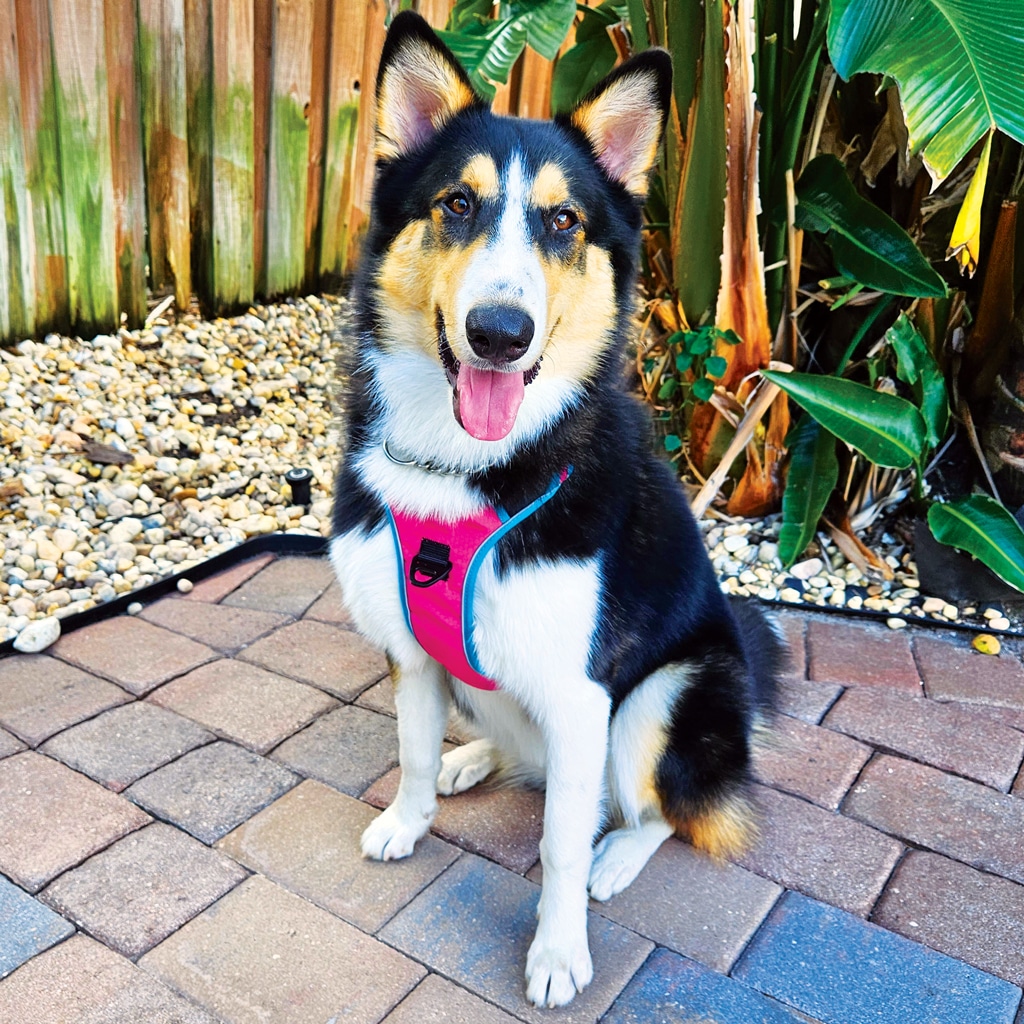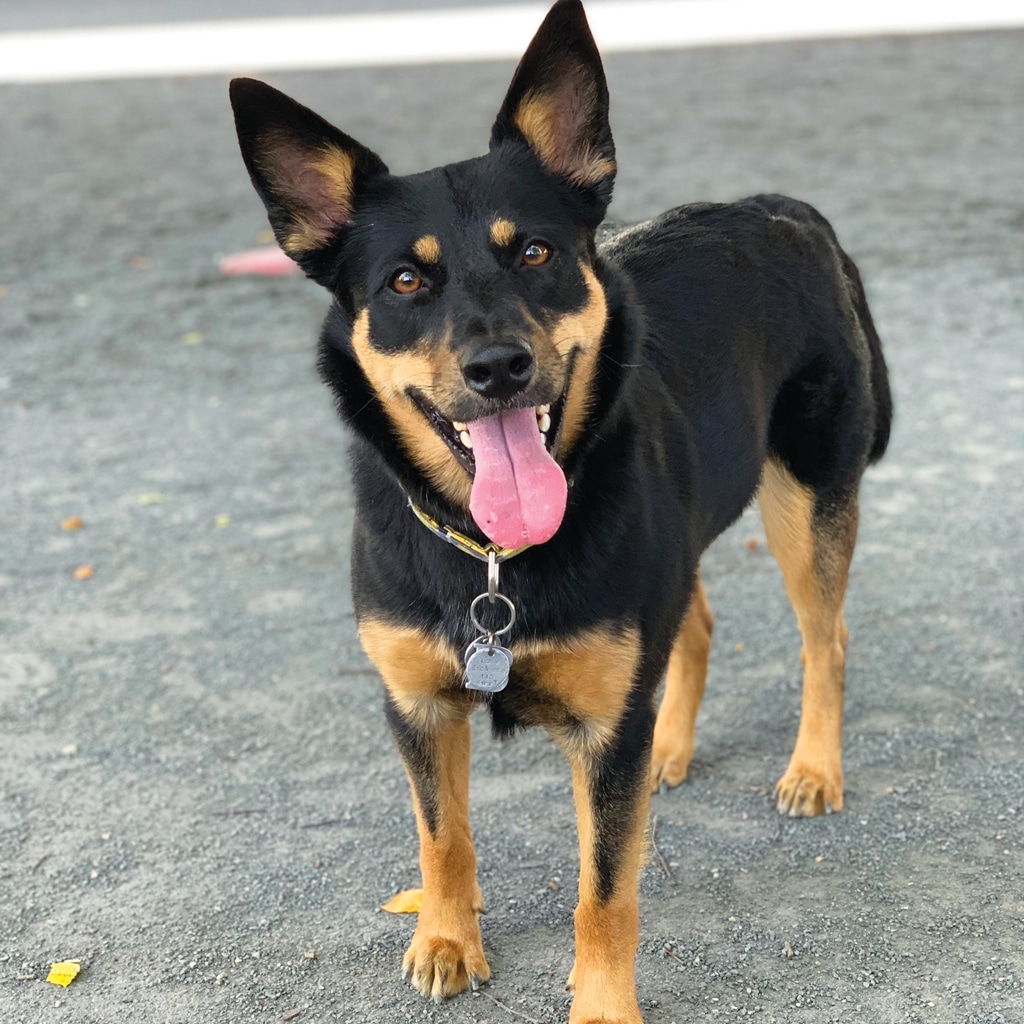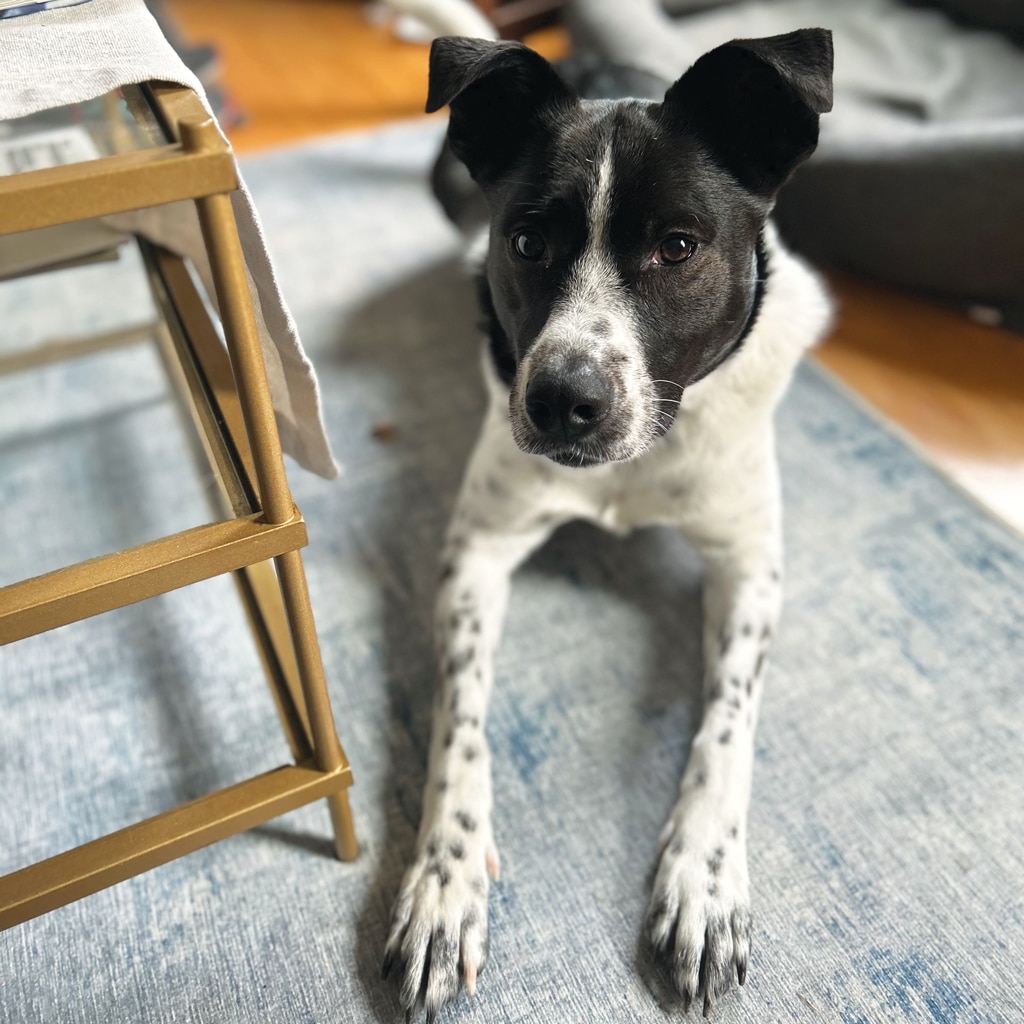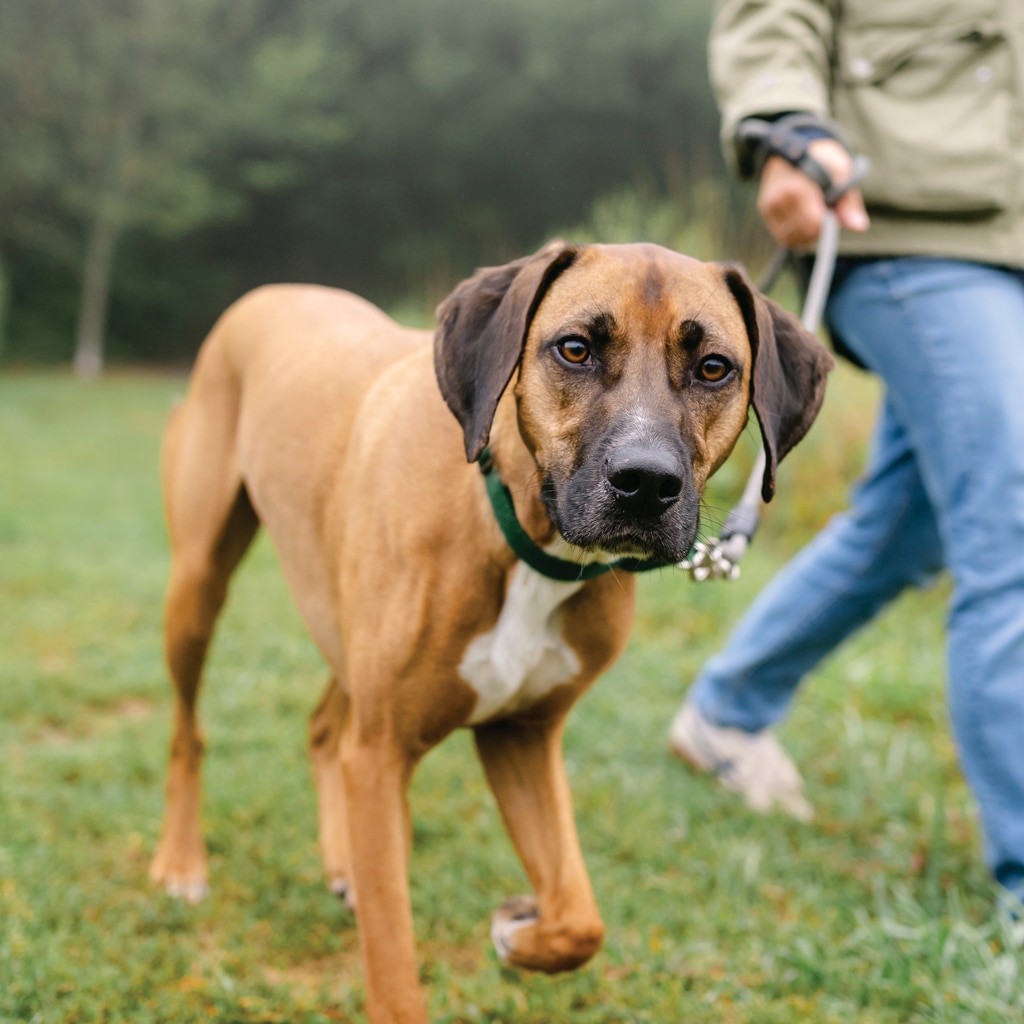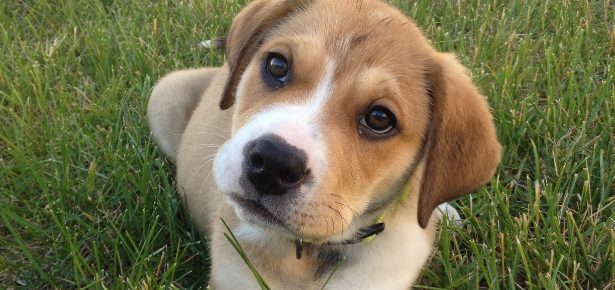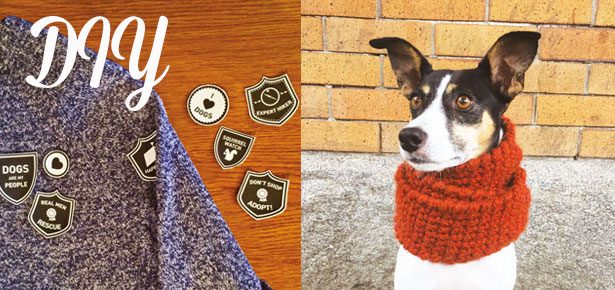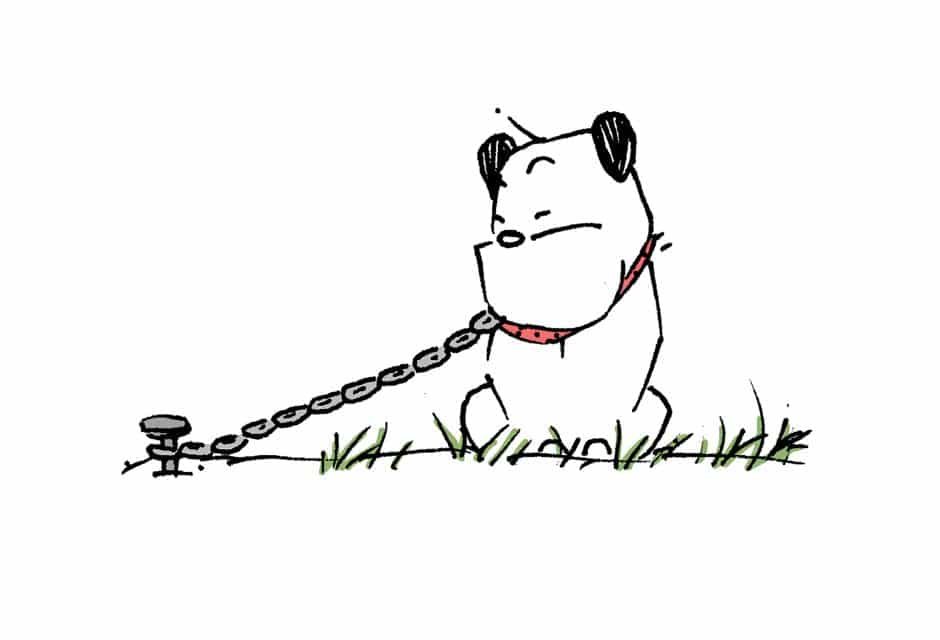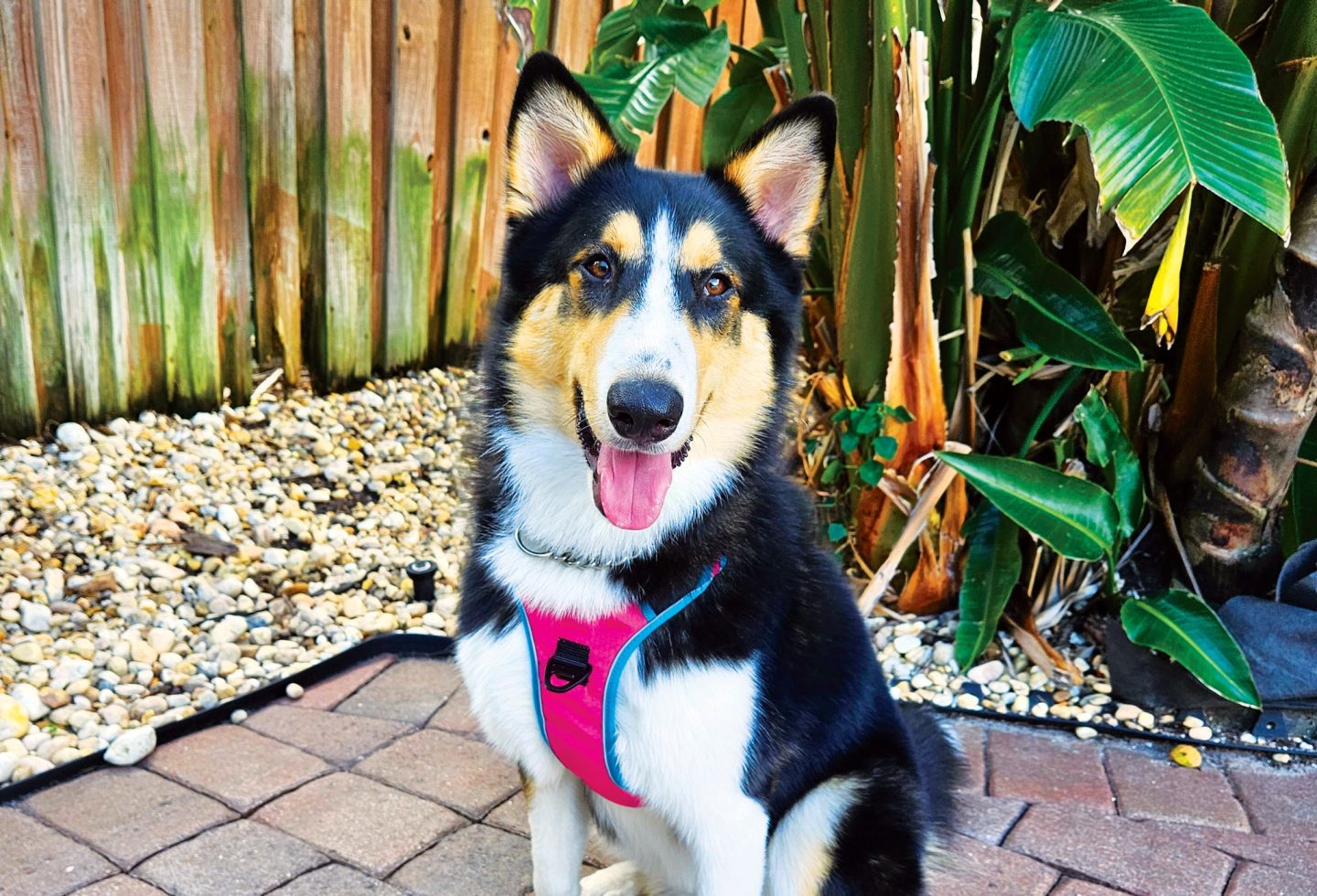
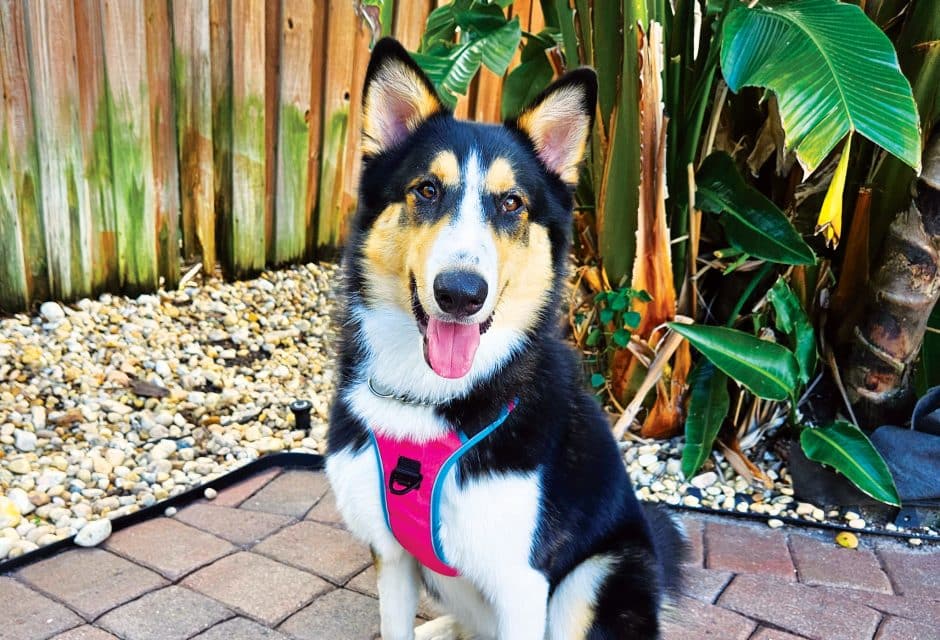
Guess the Breed Mix!
DNA test kits provide fascinating—and useful—insight into your dog’s ancestry and genetics
Not Just for Looks: What’s Your Dog’s DNA?
She had a mysterious past. No one knew where she came from or how she came to town. She was a stunner with a thick tri-colour coat that begged to be touched. It also begged for a brush as she shed liberally. She used her long, pointy nose like a chopstick, poking your pockets and, ahem, nether regions in search of answers. She was about a year old, 50 pounds of energy zooming around the house looking for trouble. She also had a lot to say.
“She talks. A lot,” her pet parent said when we first met. Marla Grassgreen of Lighthouse Point, FL, first fostered, then adopted the exuberant Lexi, calling me in to help train her new canine family member some manners. “She’s really sweet—she’s just out of control,” she added. “She drags me down the street when we’re walking. She’s really strong! She also chases the cat, but she doesn’t want to hurt him.”
“Have you ever thought about getting her DNA tested?” I asked. My curiosity went beyond Lexi’s gorgeous looks. As someone who specializes in canine behaviour, I find it interesting to guess a dog’s breed or breed mix based on their behaviour. A DNA test would let me confirm my hypothesis.
Marla and I brainstormed some guesses. Was Lexi a Border Collie mix? Was there any Greyhound in there?
Using an Embark Dog DNA test kit, we got a DNA sample from Lexi by simply swabbing the inside of her cheek with the provided cotton tip for 30 seconds, then sent it off to the lab in the pre-paid mailer. Cue suspense as we awaited the results!
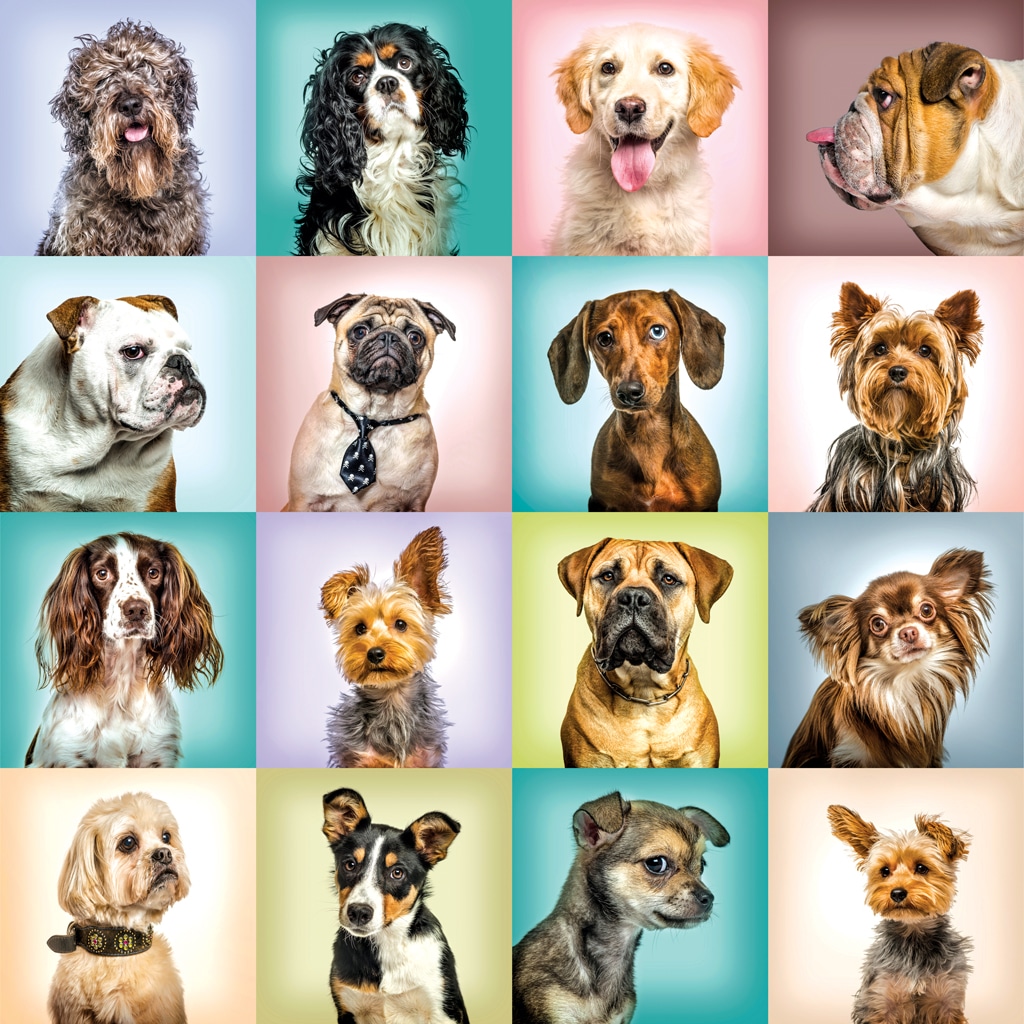
Photo Eric Isselee/Shutterstock
A History of DNA Modification
There is some debate as to how dogs became our best friends. Some suggest modern dogs are descended from wolves who “chose” to be domesticated. They saw the benefits of hanging out with humans (yum, leftovers) and became domesticated as a result. Others suggest a history of young wolves adopted into human encampments, who scavenged alongside early humans and eventually joined our families. As the tamest individuals mated, over generations, the domestic dog emerged. At any rate, no matter how dogs ventured into our lives, we’ve been messing with them ever since.
Early on, people saw the benefits of putting dogs to work. They started selectively breeding dogs to emphasize specific traits related to specific tasks. Biologists outline a typical stereotyped canine predatory sequence as oriented toward prey, eye, stalk, chase, grab bite, crush bite (kill), dissecting bite, and consuming bite. Through selective breeding, time, and trial and error, we created breeds that excelled at this entire sequence, parts of it, or hardly any of it.
Terriers, for example, exemplify the predatory sequence, although not every terrier will eat his prey. Terriers were bred to hunt, chase, and kill vermin. Whether your Yorkshire Terrier successfully stalks and hunts down a mouse or his stuffed lambie, the sequence is there.
Masters of the complete predatory sequence, however, are not ideal herders. It does a farmer no good if a dog chases and kills his livestock. Through careful breeding, the orienting, eyeing, stalking, and chasing behaviours were enhanced while the grabbing and biting parts were diminished. Thus, herding breeds love to chase.
Retrievers? They have the sequence with a (preferably) soft bite so they can retrieve fowl to the hunter. They love to put things in their mouths, whether it’s a duck or your slippers. Hounds? Masters of stalking and chasing! Hounds have a reputation for ignoring you, but they are often just consumed by scent and following their noses. For companion breeds, the sequence can be quite diluted. Some dogs can have a mouse practically dance around their water bowls and they won’t lift a paw to shoo them away. Companion breeds are loyal and devoted, however, and will follow you all over and even into the bathroom to make sure you don’t miss them.
Purebred dogs didn’t start out the way they are today. People mixed and matched canine pairs, followed fashion, and tailored for tasks. The results changed the way dogs look. For example, the Bloodhound was developed to hunt deer, wild boar and rabbits, and track people. Those long ears aren’t just cute. They trap scent and waft it towards the nose, helping the Bloodhound do his job. Behaviour and appearance are both a result of DNA.
Why Test?
Why do people choose to do DNA testing on their dogs? Curiosity is a big factor. Humans love solving puzzles—finding out what breeds make up your dog is a tempting challenge. Breeders also use DNA tests to check the health of their line and to confirm specific studs fathered specific litters.
DNA tests frequently also offer health information. Some dogs have genetic markers that can indicate sensitivity to certain drugs or a predilection to health issues. Knowing this about your dog can help you prevent or prepare for possible diseases or drug interactions. Embark’s test, for example, tests for over 250 health risks.
DNA tests take a dog’s cheek swab and separate the DNA from other cells. The testing company makes copies of the DNA and chops them into smaller pieces called fragments. They then run the fragments against a canine microarray. DNA microarrays are microscopic slides that are printed with thousands of tiny spots in defined positions. Each of these spots has a known DNA sequence or gene. Embark, for example, uses a microarray containing more than 230,000 genetic markers.
DNA tests can also reveal generations of your dog’s relatives and pinpoint where in the world they were. Over 90 percent of dogs tested by Embark are matched with a relative, letting you connect with your dog’s family.
How accurate is the test? It depends on the test—and sample. Most dog DNA testing companies claim more than 90 percent accuracy. Embark states its tests are 95 to 99 percent accurate. Note that these types of tests are never 100 percent accurate; errors due to factors like a contaminated or improperly collected sample can lead to incorrect results. But with Lexi’s looks and behaviour, we feel confident her test results are spot on.
The Reveal!
What do you think Lexi is? She is black, tan, and white, with specific markings on her face. Her coat is medium-length and very thick. She has a long pointy nose. She loves to chase, and she pulled vigorously on leash before our training. She is also extremely vocal.
My guess was Collie/Siberian Husky, and I was right! Lexi’s DNA results showed a remarkable 50/50 combination. The test also showed she has an increased risk for MDR1 drug sensitivity. Two copies of this gene would indicate she was at severe risk, and she only had one copy. This still means she could have a sensitivity to a class of medications, including ivermectin (used to prevent heartworms) and certain stomach and anti-cancer drugs. Useful information for her health care!
The test results gave us insight into Lexi’s parentage and health. What didn’t change was Marla’s love for her and my admiration. All of Lexi’s DNA added up to one sweet, beautiful girl.
Can You Guess the Breed Mix of These 4 Cuties?
These four magnificent mutts took the Embark DNA test. Make your guess and then highlight the white text after their names to see the breeds that make up their unique mix!
#1. Zelda: 50.4% Australian Cattle Dog, 34.9% German Shepherd Dog, 8.4% Australian Shepherd, 6.3% Rottweiler.
#2. Duke: 20.1% American Pit Bull Terrier, 12.8% American English Coonhound, 12.4% Labrador Retriever, 11.2% German Shepherd Dog, 10.1% Dachshund, 8.1% Cocker Spaniel, 7.8% Chow Chow, 17.5% Supermutt.
#3. Willie: 27.8% Great Pyrenees, 16.8% German Shepherd Dog, 14.6% Bulldog, 13.7% Australian Shepherd, 12.6% Australian Cattle Dog, 9.1% Border Collie, 5.4% Boxer.
#4. Sunny: 50.0% Redbone Coonhound, 31.2% American Pit Bull Terrier, 11.9% Cocker Spaniel, 6.9% American Staffordshire Terrier.
This article originally appeared in the award-winning Modern Dog magazine. Subscribe today!
Join the newsletter and never miss out on dog content again!
"*" indicates required fields
By clicking the arrow, you agree to our web Terms of Use and Privacy & Cookie Policy. Easy unsubscribe links are provided in every email.
